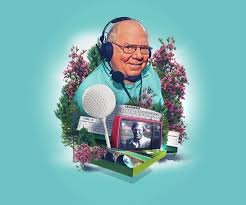Louis Armstrong Broke Barriers With Music, Optimism, and the Sheer Force of His Personality
Rarely do we hear the term “reform school” these days. But for years it was a running gag in episodes featuring the slapstick comedy team, The Three Stooges. Larry, the curly-haired stooge, attended one (a kind of correctional institution for juveniles), as indicated in this montage:
Whether or not reform school did Larry any good was never revealed. But I can tell you of one that made a pivotal difference for a renowned black musician—the inimitable Louis Armstrong, King of Jazz. He ranks as one of the greatest and most beloved entertainers of the twentieth century.
Armstrong dropped out of fifth grade in his hometown of New Orleans in 1912, when he was just 11. On New Year’s Eve that year, he borrowed his stepfather’s revolver (without permission) and headed out to the streets for some holiday fun. He fired six times in the air. They were blanks but were more than enough to get him arrested. He was subsequently remanded to the Colored Waif’s Home, a reform school, where he spent the next year and a half.
Music, he later wrote in his autobiography, Satchmo: My Life in New Orleans, had “been in my blood from the day I was born.” Before his arrest, he played a horn and sang on street corners with friends. At the reform school, he jumped at the chance to join the band, and that’s where he honed his skills at the cornet. The rest is history.
Upon release from the Colored Waif’s Home, Armstrong played wherever he could wangle an invitation. Some venues at first were on the seedy side. You get a sense of that, as well as Armstrong’s addiction to music, from this passage in his autobiography:
In all my whole career the Brick House [in New Orleans] was one of the toughest joints I ever played in. It was the honky-tonk where levee workers would congregate every Saturday night and trade with the gals who’d stroll up and down the floor and the bar. Those guys would drink and fight one another like circle saws. Bottles would come flying over the bandstand like crazy, and there was lots of just plain common shooting and cutting. But somehow all that jive didn’t faze me at all. I was so happy to have some place to blow my horn.
In the Roaring ‘20s, Armstrong played the trumpet and the trombone for the famous Fletcher Henderson Orchestra, the biggest and best black band of the day. By the end of that decade, he was gaining a reputation as a remarkable vocalist as well. People said he had a voice like gravel, and they meant it as a high compliment. He could improvise with his own amazing innovations on whatever he played, and on whatever he sang. His imprint on Jazz, on the Harlem Renaissance, and on the broader musical scene in America and in Europe remains immense.
In this video clip from Bio.com, Ricky Riccardi, author of What a Wonderful World: The Magic of Louis Armstrong’s Later Years, the musician’s pioneering spirit comes through:
Armstrong broke down many barriers throughout the 1930s. He becomes the first African American to have it in his contract that he would not play at a hotel he could not stay at. He becomes the first African American start to get featured billing in a Hollywood movie. Just through his music and the sheer force of his personality, the barriers start falling…He makes over 35 films. He was the first jazz musician to appear on the cover of Time magazine. Louis was the real King of Jazz.
At 63, he became the oldest performer to hit #1 on the Pop Chart, with his rendition of Hello Dolly!. Four years later at age 67, What a Wonderful World made him the oldest male to top the UK Singles Chart. Among other Armstrong firsts was the fact that he hosted a nationally broadcast radio show before any other black man or woman.
Aside from his innovative music and his unforgettable voice, what I remember the most about Louis Armstrong was his smile. It was no ordinary one. Not only was it ever-present, it was also the widest smile I’ve ever seen. It was so infectious that I still find myself smiling back any time I watch one of his recorded performances.
It’s just my conjecture but I think that characteristic Armstrong smile reflected his naturally happy and optimistic outlook on life. He loved making others smile. He grew up in a world where racial animosity was all too common, and in a part of the country where segregation was the norm. But he never let it darken any corner of his own soul.
Friends in the growing civil rights movement often urged Armstrong to get more personally involved in the struggle. They wanted him in the streets and in the halls of Congress, but he believed his less confrontational approach that focused on putting his talent on display for all would prove more productive in the long run.
Once, when he felt frustrated at President Eisenhower’s initial inaction in the 1957 school segregation crisis in Little Rock, Arkansas, Armstrong did speak out in no uncertain terms. But he mostly worked to bring blacks and whites together by his effervescent personality and the universal appeal of his music.
When he died in 1971, fellow Jazz great Duke Ellington said of him, “He was born poor, died rich, and never hurt anyone along the way.”
Watch Armstrong sing “What a Wonderful World” and you’ll likely discover it’s physically impossible not to smile as you do. He made the words, inspirational to begin with, resonate in a way that many find to be magnetically uplifting:
I see trees of green, red roses too.
I see them bloom for me and for you
And I think to myself, what a wonderful world!I see skies of blue, and clouds of white.
The bright blessed day, the dark sacred night
And I think to myself, what a wonderful world!The colors of the rainbow, so pretty in the sky
Are also on the faces, of people going by.I see friends shaking hands, saying, “How do you do?”
They’re really saying, “I love you!”I hear babies cry, I watch them grow.
They’ll learn much more than I’ll ever know.
And I think to myself, what a wonderful world!Yes, I think to myself, what a wonderful world!
Oooh yeah!
If Louis Armstrong were alive today and a witness to the many dark moments and sad days we Americans have experienced recently, could he still think of the world as “wonderful”? I think he could, and he would. He was always more interested in the good in people than he was the bad. That’s just the way he was, and probably the way the rest of us ought to be.
https://www.youtube.com/watch?v=CWzrABouyeE
For additional information, see:
When the Saints Go Marching In (video)
What a Wonderful World (video)
Hello, Dolly! (video, with Barbra Streisand)
Ain’t Misbehavin’ (video)
Satchmo: My Life in New Orleans by Louis Armstrong
Rowlf the Muppet Dog Sings What a Wonderful World to a Puppy (video)
What a Wonderful World: The Magic of Louis Armstrong’s Later Years by Ricky Riccardi
Who Was Louis Armstrong? By Yona Zeldis McDonough
Pops: A Life of Louis Armstrong by Terry Teachout
This article was originally published on FEE.org



